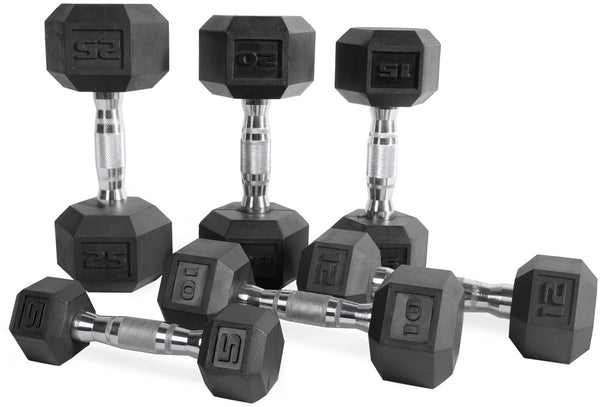Your Cart is Empty
November 12, 2023 3 min read
The hamstring muscles are one of the most important muscle groups for athletes and fitness enthusiasts alike. They are responsible for providing stability and power to movements such as running, jumping, and walking. Strong hamstrings also help improve balance and posture. Training your hamstrings is essential for optimal athletic performance and for reducing the risk of injury.
Shop The Collection: KettlebellsHamstring training can be intimidating for beginners, especially if they don’t understand where this group of muscles is located or what kind of exercises can effectively train them. To maximize muscle gains with hamstring training, it’s important to understand the anatomy of the hamstrings, which exercises target the hamstrings, and how to properly perform these exercises.
 Shop The Gear: MAGMA Cast Iron Kettlebells, from $10.99 USD
Shop The Gear: MAGMA Cast Iron Kettlebells, from $10.99 USD
The hamstrings are a group of three muscles located at the back of the upper leg. They are the biceps femoris, semitendinosus, and semimembranosus. These muscles are responsible for bending the knees and extending the hip when in motion. The hamstrings also play an important role in stabilizing the knee joint.
Shop The Collection: DumbbellsWhen it comes to hamstring training, it’s important to understand the different parts of the hamstring and which exercises target each part. The biceps femoris is the outermost muscle and is responsible for knee flexion. It is targeted by exercises such as Romanian deadlifts, lying leg curls, and single-leg Romanian deadlifts. The semitendinosus is the middle muscle and is responsible for knee flexion and hip extension. Exercises such as glute bridges, hip thrusts, and reverse lunges target the semitendinosus.
 Shop The Gear: CAP Barbell Rubber Hex Dumbbells, from $3.99 USD
Shop The Gear: CAP Barbell Rubber Hex Dumbbells, from $3.99 USD
The semimembranosus is the innermost muscle and is responsible for knee flexion and hip extension. Exercises such as straight-leg deadlifts, kettlebell swings, and split squats target the semimembranosus.
Proper form is essential for hamstring training. When performing hamstring exercises, it’s important to keep your spine neutral and avoid excessive arching of the lower back. You should also remember to keep your core engaged and your chest up throughout the exercise.
When performing exercises such as Romanian deadlifts, it’s important to keep your shoulders back and down and your arms straight. During the eccentric portion, you should focus on pushing your hips back and keeping your back flat. During the concentric portion, you should focus on driving your hips forward and squeezing your glutes at the top of the movement.
For exercises such as glute bridges and hip thrusts, it’s important to keep your core tight and your shoulders pressed into the floor. You should also focus on driving through your heels and squeezing your glutes at the top of the movement.
For exercises such as split squats, it’s important to keep your chest up and your core engaged. You should also focus on dropping your back knee towards the floor and driving through your front heel to stand up.
Once you understand the anatomy of the hamstrings and how to properly perform hamstring exercises, there are several tips you can follow to maximize muscle gains with hamstring training.
First, it’s important to incorporate a variety of exercises into your routine. This will ensure that all parts of the hamstrings are being targeted and challenged. Second, make sure to use an appropriate weight. Too light of a weight won’t challenge the muscles enough, while too heavy of a weight can lead to improper form and possible injury. Third, focus on the eccentric phase of the exercise. The eccentric phase is when the muscle is lengthening under tension, and focusing on this phase can lead to greater gains in strength and size.
Fourth, make sure to rest between sets. Rest allows your muscles to recover and rebuild, so it’s important to give yourself enough time to rest before moving onto the next set. Lastly, it’s important to pay attention to your nutrition. Eating a balanced diet and getting enough protein will ensure that your muscles have the necessary nutrients to repair and grow.
Hamstring training is an essential component of any fitness program. By understanding the anatomy of the hamstrings, which exercises target the hamstrings, and how to properly perform these exercises, you can maximize your muscle gains and reduce the risk of injury. Incorporating a variety of exercises, using an appropriate weight, focusing on the eccentric phase, resting between sets, and paying attention to nutrition are all key elements to optimizing your hamstring training.
Shipping Protection gives you peace of mind while saving you time and money.
Shipping Protection provides coverage for eligible orders that are lost or damaged in transit, or stolen after delivery has been confirmed by the carrier. MAGMA Fitness, through its partners, administers the protection program and may receive compensation for these services. Coverage is subject to the terms, conditions, and exclusions outlined in our Shipping Protection Terms & Conditions.